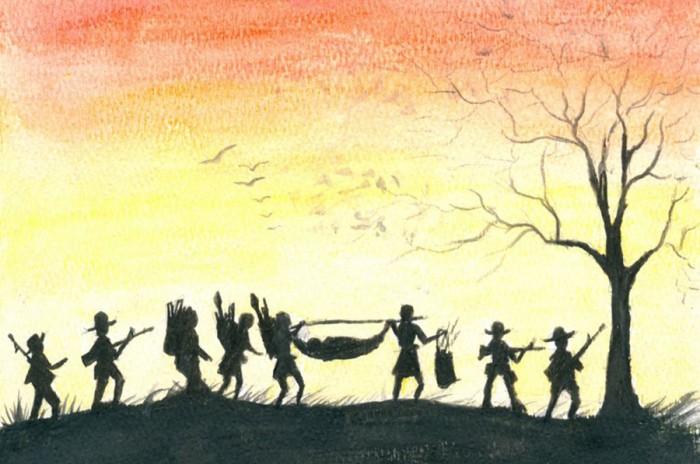
“We need your help.”
This is how Seattleite Erika Berg has started each of the more than forty visual storytelling workshops she has conducted for refugee youth from Burma (also known as Myanmar).
“These kids were so used to asking others for help. And then we put the focus on them, and they were so bewildered – ‘What’s so special about me?’” Berg said.
Next, Berg passes out paper, watercolor crayons and pencils. She asks children questions about their experiences and memories, and they are free to draw in response. In a project that has stretched from King County to India to Thailand to Burma itself, Berg has collected more than 1,200 of these hand-drawn paintings and pictures, or “visual stories.” Set to release in February 2015, the collected visual stories in Berg’s upcoming book “Forced to Flee” humanize events and issues in Burma that are often politicized in headlines and human rights reports.
Ta Kwe Say, a refugee from Burma who identifies as part of the Karen ethnic group, was part of one of Berg’s workshops for high schoolers at a Tukwila library nearly four years ago. After participating in Berg’s workshop, Say eventually applied for and was granted a fellowship to co-facilitate workshops with Berg.
“By sharing their stories with art supplies, even newly resettled refugees who have yet to learn English would be capable and encouraged to voice their issues,” Say said. “When someone is just beginning to learn how to speak English, it can be scary to speak up.”
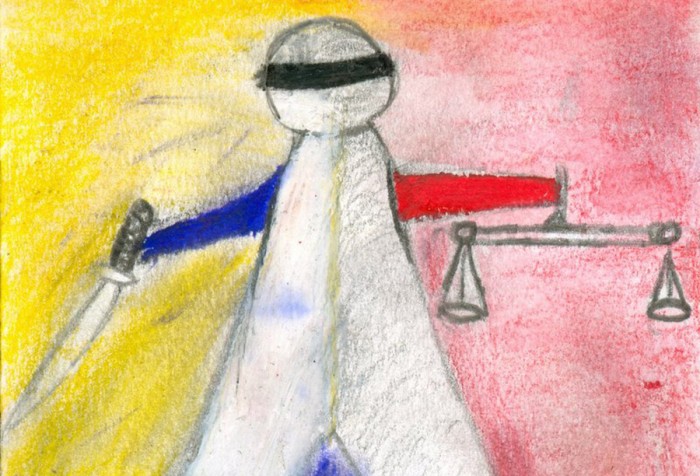
Berg’s upcoming book of visual stories is organized in five chapters, based on the five questions she often asks workshop participants:
- Why were you forced to flee Burma?
- What do you remember most about your journey to safety?
- What is/was it like to live in exile (in a refugee camp)?
- What do you miss most about Burma?
- What is your dream for the future?
What is now the Forced to Flee project began to take form as early as 2000, when Berg volunteered to teach English at the Refugee Women’s Alliance (ReWA) in Seattle. Having grown up with a mother who was artistic, and having worked for 24 years in book publishing herself, communicating with images and stories came naturally to Berg.
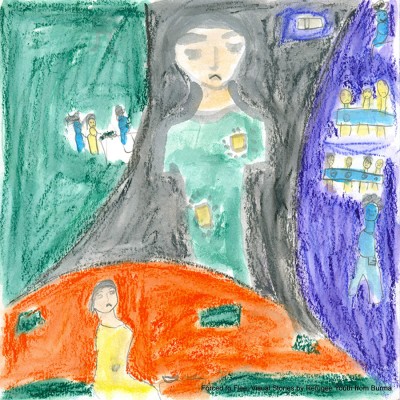
“It just ended up being a way of inviting those who had experienced trauma to express their feelings in a way that was safer than using words,” said Berg. “That was my initial motivation: to have them feel heard, to unlock a door where they would feel safe to speak in the future.”
In 2007, Berg watched with the world as the Saffron Revolution unfolded in Burma, and it sparked her to devote her energies to Burma’s refugees and its democracy movement.
By no coincidence, 2007 also marked the beginning of a new wave of Burmese refugee resettlement in Washington state. By 2009, Burma became our state’s largest refugee community.
After conducting workshops on Burma’s borders with India and Thailand with her husband and daughter by her side, Berg showed some of the visual stories she had collected in an exhibit at the Seattle Art Museum (SAM).
“I wanted people to just walk away saying ‘wow’ at how much it takes for someone just to survive,” Berg said. “Refugees often don’t know where they’re going, what’s at the other end, how long it will take, or if they’ll even be safe once they get there.”
Writing the captions and material for the SAM exhibit jumpstarted Berg’s efforts to produce a book showcasing the visual stories of refugee youth.
And the release of these stories, scheduled for 2015, could not come at a more critical time. As Burma hurdles toward unpredictable 2015 elections, President Obama’s recent trip to Burma shined a spotlight on events and issues that the popular conversation has, until now, largely left in the dark.
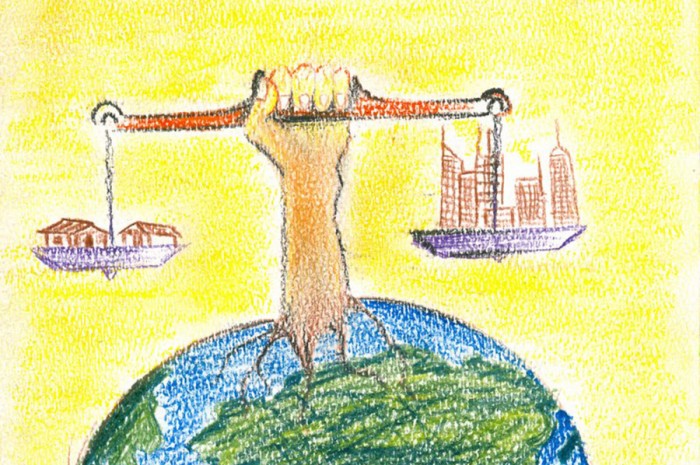
The stories and experiences pictured in “Forced to Flee” illuminate some of these same issues: human rights abuses against Muslim Rohingya, whom the United Nations describes as “one of the world’s most persecuted minorities”; the nearly 100,000 Kachin and Shan who live in Internally Displaced Person (IDP) camps; the hundreds of thousands of refugees living in camps along the Thailand-Burma border, the India-Burma border, and in Delhi; ongoing armed conflict in Burma’s Karen State; and the mounting uncertainty of democratic reforms to Burma’s constitution.
Now, Ta Kwe Say is an undergraduate at the University of Washington (UW), majoring in social welfare and playing a leadership role in the Burma/Myanmar Student Association. Fluent in three languages, he has worked as an interpreter for two local refugee resettlement agencies. He aspires to eventually earn a master’s degree at the UW’s School of Social Work.
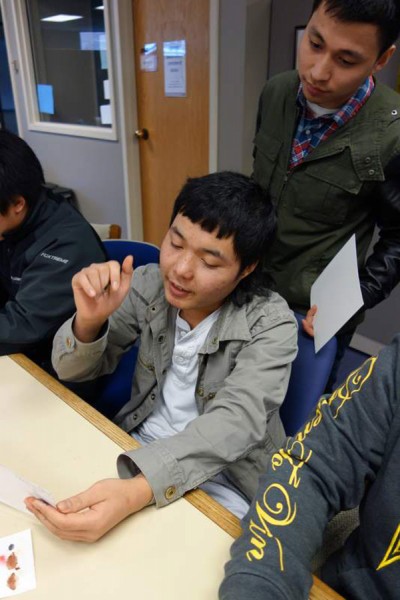
Last June, Say was invited to Washington, D.C. to participate in a refugee leadership program and call on legislators for World Refugee Day 2014.
“I shared about my experience resettling in the United States. I shared about my challenges being a student,” Say said. “Many refugees arrive every year, but the funding is still the same. The refugees and immigrant services need more funding, because they need more support to start their life here.”
Moving forward, Berg plans to continue offering workshops in the greater Seattle area. She also intends to travel back to Burma to work with IDPs in Kachin and Rakhine states, and even envisions a touring exhibit of “Forced to Flee” visual stories and workshops within Burma.
Amidst growing urgency in a volatile political landscape, Berg’s intent for the Forced to Flee project remains.
“I want people to not only know about refugee youths’ experiences, but also be mobilized to act,” Berg said.
“These are their stories, and they’ve shared them generously and bravely.”
Learn more or contribute to the “Forced to Flee” project.
This story has been updated since its original publication.


Thank you for sharing this important story. Art is such a healing medium…